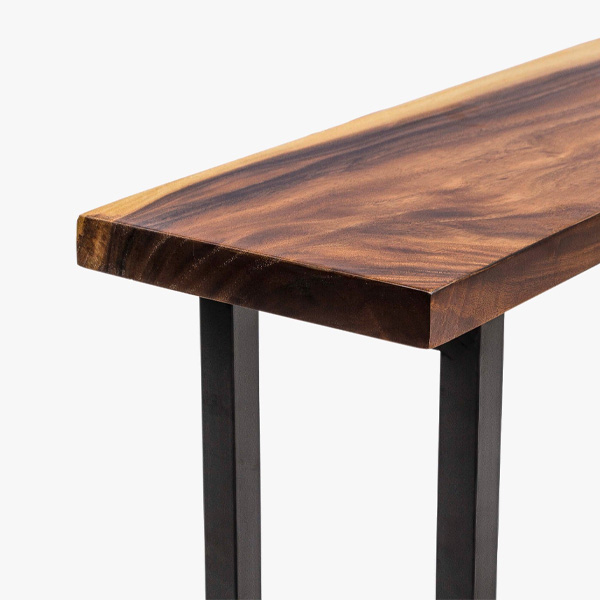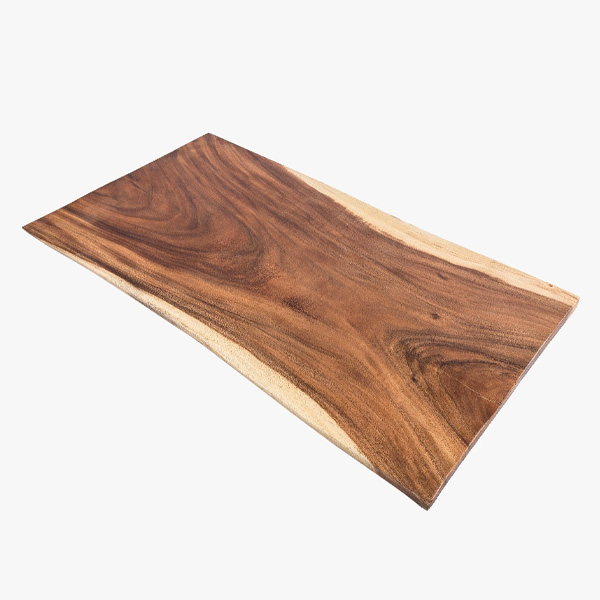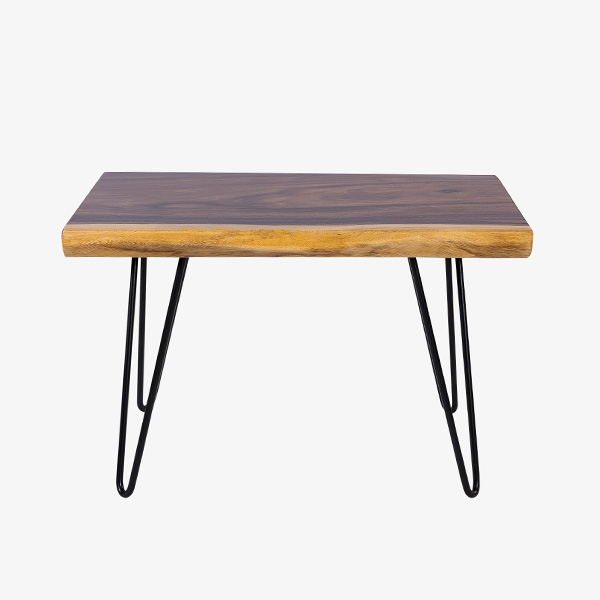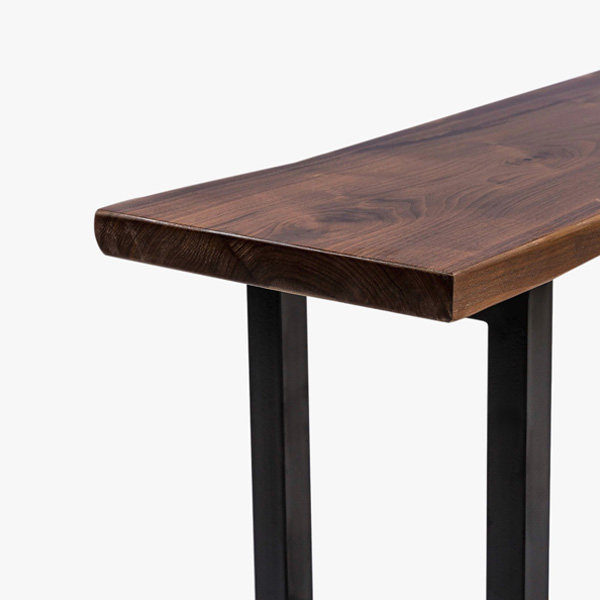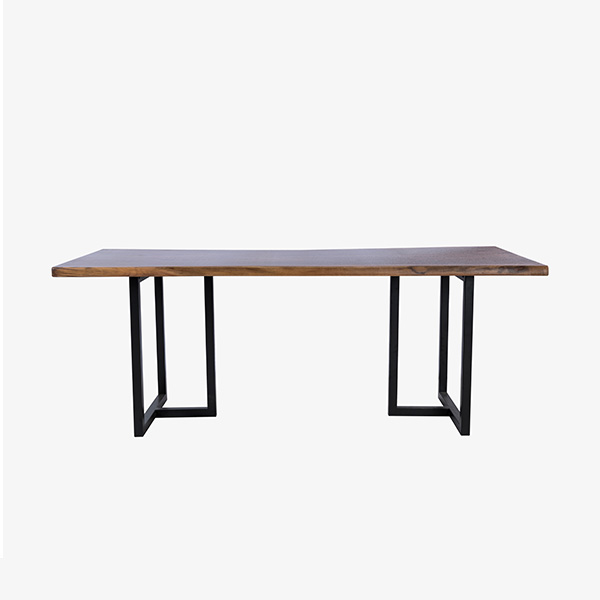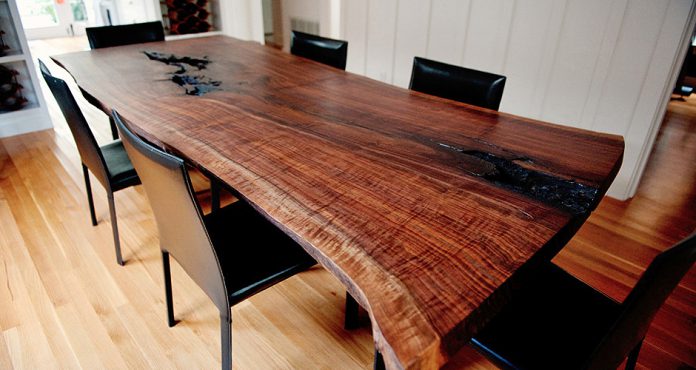
Wood slab tables typically have an oiled and dried table surface with one side left at its natural or untouched state. Crafted from live edge slabs, solid wood dining tables are an authentic addition in many elegant and classic Mid-Century homes. Their roots can be traced back to the 20th American craft movement on furniture design.
A brief history

Mid-Century modern woodworker, furniture-maker and architect George Nakashima popularised live edge furniture in modern homes.
Born in Spokane, Washington, Nakashima always had a passion for design so he finished a Master’s Degree in Architecture from Massachusetts Institute of Technology. Upon finishing his studies, he took apprenticeships in India and Japan.
Nakashima was imprisoned at a Japanese internment camp during WWII. During his captivity, he was mentored by an old Japanese craftsman until his release n 1943. He then created a furniture factory for his iconic wood slab tables.
Even back then, Nakashima was insistent in including natural and organic elements in his creations. He believed that trees were our most intimate contact with Mother Nature. Despite its imperfections and quirks such as burks and knots, trees portrayed nature’s raw and flawed beauty.
Benefits of live edge tables

The wood slab table and live edge table celebrate natural beauty. Since wood and trees are timeless and classic elements, live edge furniture can be easily incorporated in the interior design of any home.
Live edge tables also highlight the wood’s organic properties such as its curves and shapes. Despite its imperfections such as scars, splits, fissures and grains—it looks gorgeous.
Popular Wood Slab Types
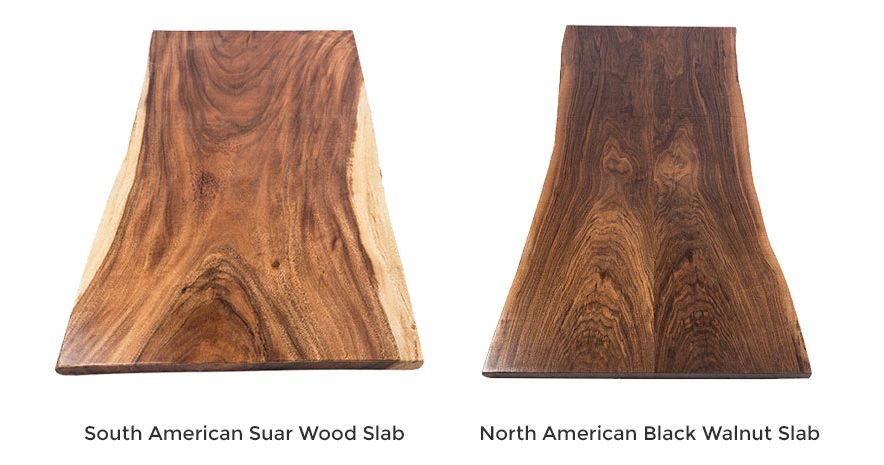
As we mentioned, live edge tables and wood slab tables easily mix with a vast array of style choices. The main live edge table variants today are the South American Suar Wood and North American Black Walnut.
South American Suar Wood

Suar wood – sourced from South American Acacia forests – are used to make wood slab tables. The table’s surface is usually filled with natural features like grains, scars, knots, splits and fissures that make each piece unique.
Suar wood is highly sought after for its strength and durability. Unlike other slabs, it is noticeably cut thicker with metal rods fitted inside it. The complex grain patterns and chocolate brown finish also make it a highly prized piece of furniture. Its beautiful honey and amber tones can easily spark conversations in the dining room.
Suar wood tables are a great investment. Its ability to resist termites and decay make it last for a long time. It’s also low maintenance, requiring only soap and water to look beautiful all-year round.
North American Black Walnut
Walnut is a very stable wood for live edge tables. As its name suggests, it’s sourced from North America’s Black Walnut trees.
Much like the Suar Wood table, the black walnut is popular because of its authentic and rustic aesthetic. The rich dark tone and imperfect grains can easily blend in with the furniture in your dining room. The tabletop is coated with deep sealer and polished with high-quality finishing coats.
North American black walnut slabs are smaller so matching slabs are placed side by side to make a large wood table. The additional craftsmanship and recent decline in the number of black walnut trees – contribute to its high price point.
Wood slab furniture from our collection:
View more Wood Slab Tables.


